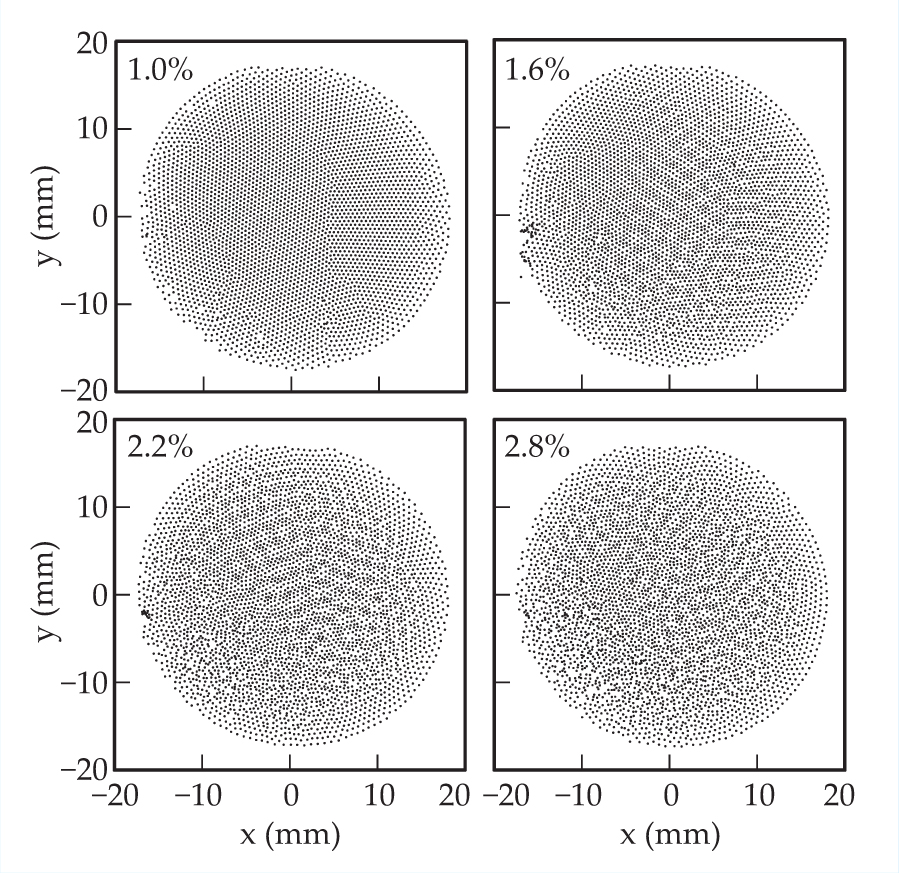Two-dimensional melting in a dusty plasma
DOI: 10.1063/1.4796738
The melting transition has long fascinated physicists, both for its ubiquity in nature and industry and for the sophisticated physics of the phase transition in general. Two-dimensional systems can mimic surfaces, which melt differently from bulk matter. One such system is a 2D dusty plasma: Background gas in a vacuum chamber is ionized when RF power is applied to an electrode. With sufficient care, one can levitate a single layer of charged “dust” microspheres above the electrode; electrostatic repulsion spreads the particles apart, usually in a stable 2D crystalline pattern. At Ohio Northern University, Terrence Sheridan came up with a new way to heat only the layer of dust. He modulated the RF power at a resonance frequency so as to jiggle the dust up and down; some of that motional energy coupled to an in-plane acoustic instability, increasing the dusty plasma’s effective temperature. The panels show the dust distributions for different modulation amplitude levels. At 1.0%, the entire system oscillates vertically as a crystalline rigid body. As the hexagonal crystal is “heated,” the coupling becomes evident in the central region at 1.6%. The crystal begins to melt at 2.2% and enters a hexatic liquid-crystal phase; it fully melts at 2.8%. For more on dusty plasmas, see July 2004, page 32






